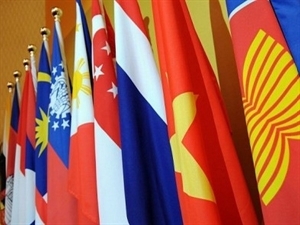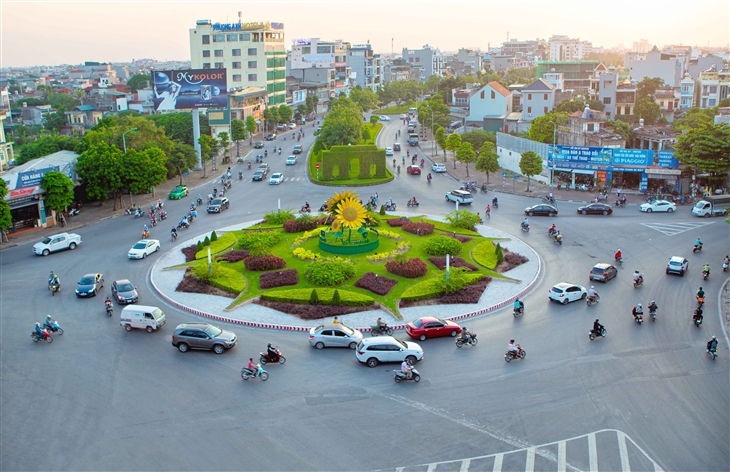Asean economic community 2015: will it happen?
Wednesday, December 3,2014
AsemconnectVietnam - The 2015 Asean Business Outlook Survey issued by the US Chamber of Commerce reveals prevalent anxiety that a good chunk of the Asean Economic Community (AEC) isn’t going to be ready by the 2015 deadline.
Most respondents were a bit cynical about the AEC’s inauguration even happening by 2020. That’s because this isn’t the first time the AEC has faced a potential delay. The original AEC commencement had been pushed back in 2012 from January 1, 2015 to December 31, 2015. Although Surin Pitsuwan, then Asean secretary-general, had firmly said there would be no further delays and that all 10 countries were going to participate, strong and not so strong AEC proponents worried about the possibility that the AEC would not be ready by the close of 2015.
The AEC was born out of the Asean Vision 2020 adopted on the 30th anniversary of Asean in 1997. The goal is to produce one market and production base by 2020 with a free movement of services, goods, capital, investments and skilled labor. When Asean leaders met in 2003, they signed the Declaration of Asean Concord II and agreed to establish the AEC by 2020.
However, in 2007, the Cebu Declaration sped up this establishment to the year 2015. This is when Asean revealed its AEC Blueprint, which, two years later, became the Roadmap for an Asean Community to help with the AEC’s enactment.
The AEC Scorecard was developed to track the progress being made, based upon the EU Internal Market Scorecard. Since its inception, there were two published scorecards – 2010 and 2012.
The 2012 AEC Scorecard reveals four key objectives, one market and production base; a viable fiscal region; reasonable economic growth and incorporation into worldwide economy (187 of 277 measures have been already put into place by the end of 2011).
Thus the AEC formation is right on track, which begs the question why so many people don’t expect it to occur by 2020.
The scepticism isn’t too hard to understand. It took nearly 50 years for Europeans to put together the European Community during the European integration process.
The Asean way of not interfering with domestic political affairs may cause the non-recognition of joint economic interest.
Some critics have noted that several AEC implementation deadlines have passed and several key initiatives have yet to begin.
For instance, due to financial shortcomings, corruption, poor governance and the inability for governments to manage interdepartmental and international coordination – just 50% of the Master Plan on Asean Connectivity has been put into action.
The largest concern, however, is Asean’s lack of structure to pull the AEC along.
Think of the AEC as if it were a train. That makes the Asean Secretariat the locomotive.
But even the Asean Secretariat does not have enough intellectual and financial resources to act like it should.
Even more shocking is that the resources it does possess have changed in 15 years despite the area’s quadrupled gross domestic product (GDP).
The total budget for the Asean Secretariat for 2013 was US$16 million – a small amount for an ever-growing institution with more activities and mandates. The European Commission – for its administration – had a budget of around US$4.3 billion in 2012.
Many times that amount was spent by European governments to start off their area projects. And the Asean Secretariat is less than fully staffed. In 2012, there were just 300 people in the Asean Secretariat; the European Commission employees nearly 34,000 people.
The budget constraints at Asean headquarters reveal that an entry-level professional makes around US$3,000 every month, and this is still after recent significant improvements were made to remuneration packages.
It’s no wonder the Asean Secretariat is struggling to find highly qualified and experienced staff for its department.
It’s possible the AEC could be attained if Asean members can come together for the greater good – such as the benefits that come from the envisaged economies of one Southeast Asian market. Still, delays in bringing the AEC to fruition are a reflection of one of the more overwhelming challenges that face Asean: member states’ unwillingness to view themselves as being one market.
For instance, Indonesia has yet to ratify the Asean Multilateral Agreement for the Full Liberalisation of Air Freight Services. Its reasoning for not doing so is to keep regional competitors from encroaching on its domestic aviation industry – specifically Malaysia, Singapore and Thailand.
With Indonesia not participating, the one aviation market is in name only, with no actual “open sky” above the Asean territory. There are numerous other examples.
Many times, narrow national interests do better than a larger-scale regional interest with short-term benefits outweighing the long-term ones. The Asean way of not interfering with domestic political affairs may cause the non-recognition of joint economic interest.
Should there be no sanction mechanism or powerful regional institutions for both non-cooperation and noncompliance, member states will only respond to peer pressure to carry out community obligations.
The final issue is the slow progress and hurdles being encountered to get the AEC going, all because there is a basic awareness deficit of both AEC and Asean throughout the region.
According to a 2013 Asean Secretariat survey, three of every four Asean citizens have no real understanding about the grouping. There is little doubt that the European experience is something the Asean can learn from – helping to promote public awareness regarding the EU.
For directly impacted EU citizens of any EU legislation to understand the assessments made in Brussels, there must be 24 official translations.
Thus, national authorities must make them aware of these laws before they can be implemented.
Regardless of their language, EU citizens need to know what their leaders are up to. For Asean, English is the working language, but it is difficult for the average citizen to understand the regional agenda, especially if it’s only offered in English.
Nonetheless, the earlier Indonesian government recklessly announced a new policy, which excluded the teaching of English language for primary school students.
It’s also a known fact it is going to take time and money to copy the EU approach, and involving both complicated historical and regional differences.
However, increasing the number of people who are Asean-aware using more effective ways of communication is helpful to the AEC establishment.
On top of that, better public understanding about the AEC would entice people to use what is set to become a lone market that includes 600 million people and a US$2.3 trillion GDP.
For the AEC to be launched on time, it needs the backing of a powerful Asean Secretariat and all 10 member states to forgo their narrow-minded fixations on shared affluence and wealth.
Source: bloomberg.com
Standard Chartered, US promote clean energy investments in Vietnam
Vietnam, Russia’s Zabaikal region enhance cooperation
Hai Phong Techfest connects Vietnamese, RoK businesses
Made-in-Vietnam wind turbine towers bound for RoK
Vietnam-Laos-Cambodia-Thailand trade fair opens in Laos
NA Chairman meets with executives of large Chinese groups
Vietnam, Laos sign new trade agreement
French businesses interested in Vietnamese market
Vietnam, Russia discuss stronger agriculture cooperation
Vietnam, Indonesia similarities facilitate trade, agro-fishery cooperation
Vietnam, Japan promote financial mechanisms in green energy transition projects
Vietnam Connect Forum 2024 to take place in Hai Phong next month
Vietnam, Canada look to boost trade cooperation
Binh Duong province seeks cooperation opportunities with Australian partners

Plan of Hai Duong province for a period of 2021 - 2030, ...
Organize space reasonably and harmoniously, focusing on connecting Hai Duong in common development space, actively contributing to the ...Plan of Hau Giang province in a period of 2021 - 2030, ...
Sustainable forestry development program in a period of ...

12th-century ancient road unearthed at My Son Sanctuary
An ancient road dating back to the 12th century has freshly been discovered in an excavation on architectural ruins at the east side of ...Efforts made to seek UNESCO’s recognition for Con Moong ...
Vietnam Art Photo Contest and Exhibition 2024 to be held ...
Bas-relief featuring talks between Uncle Ho and soldiers ...



